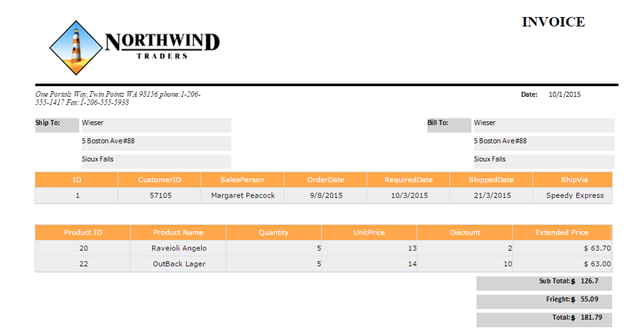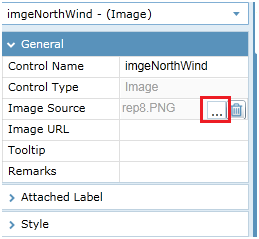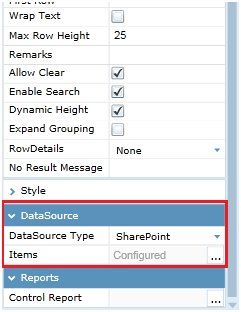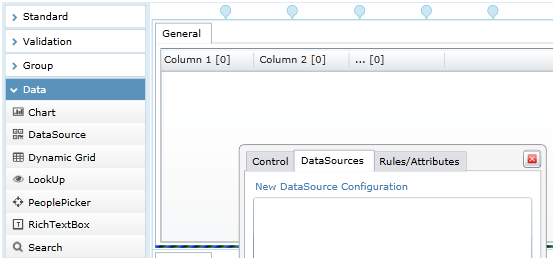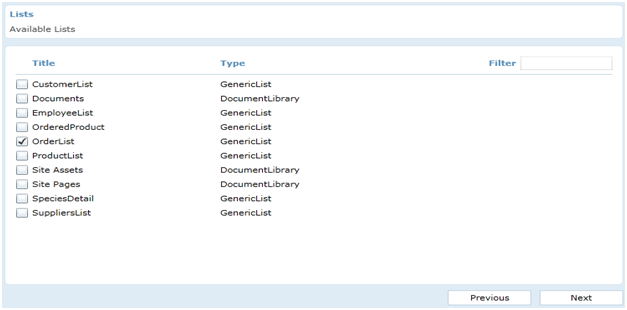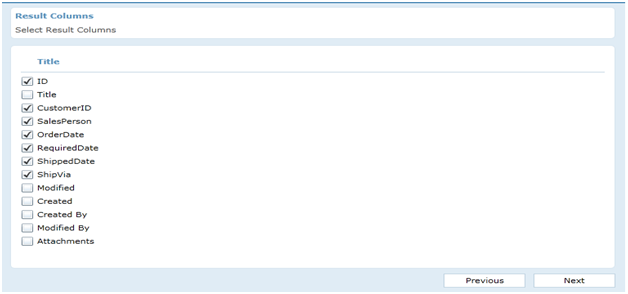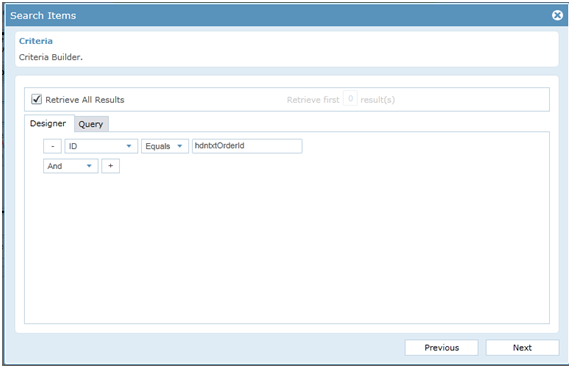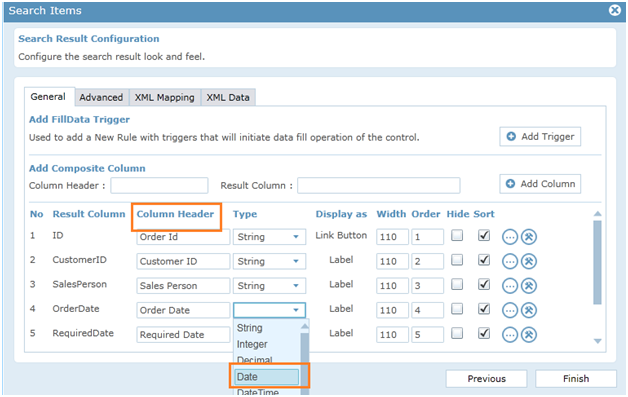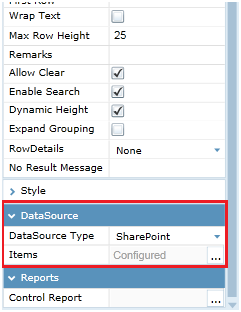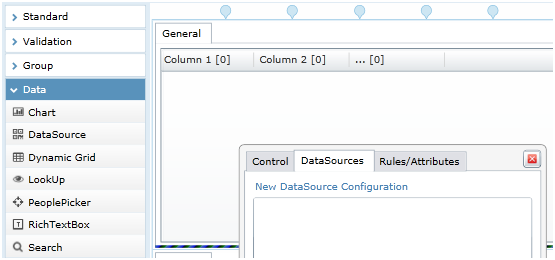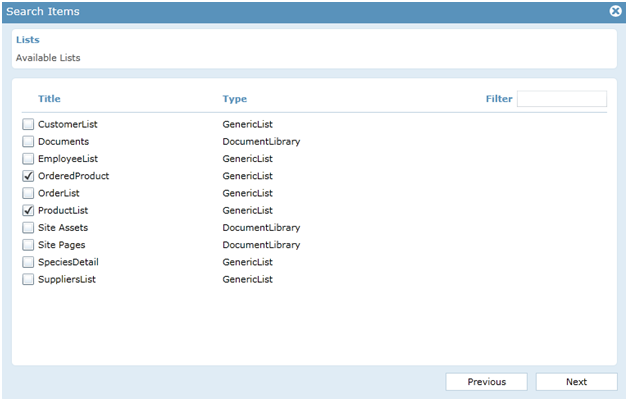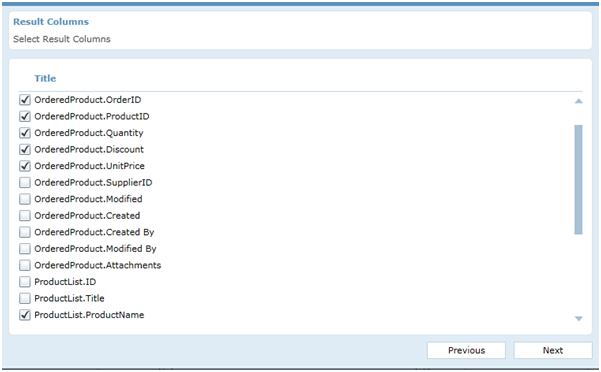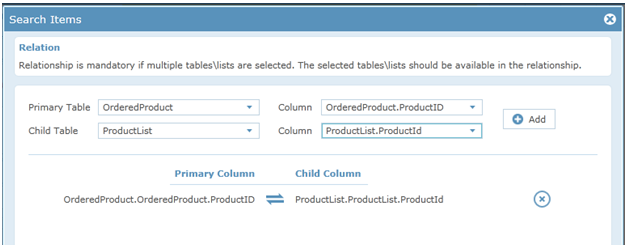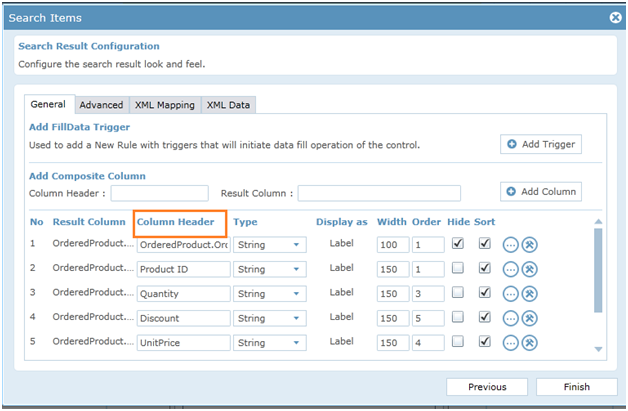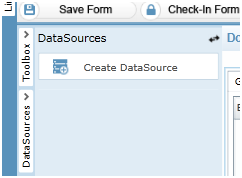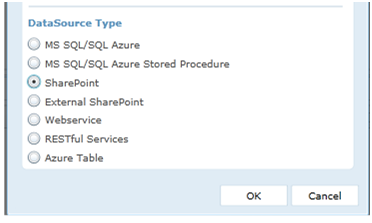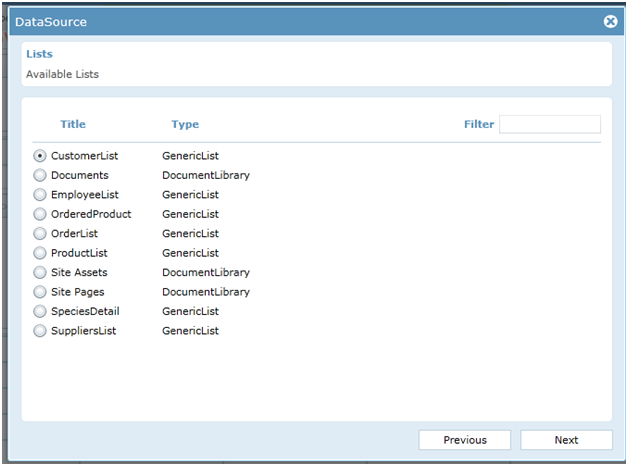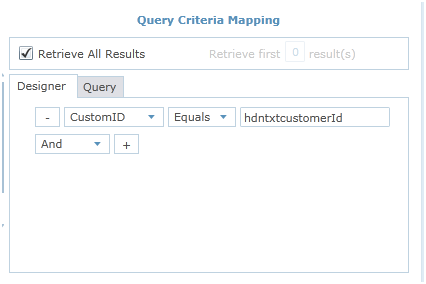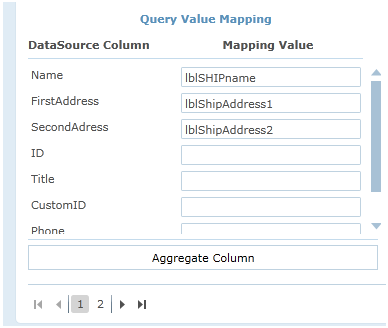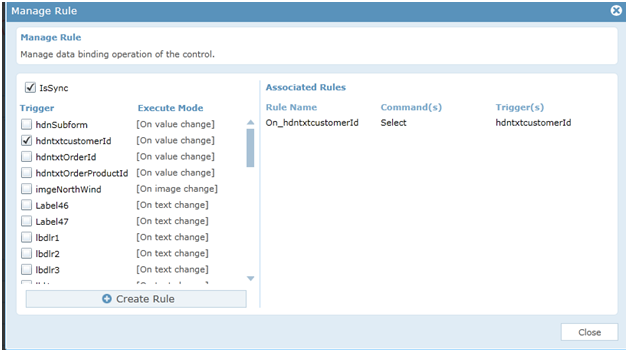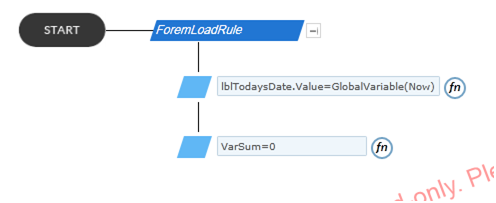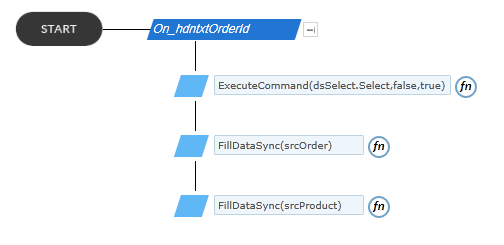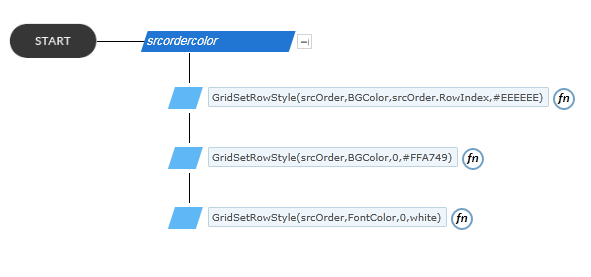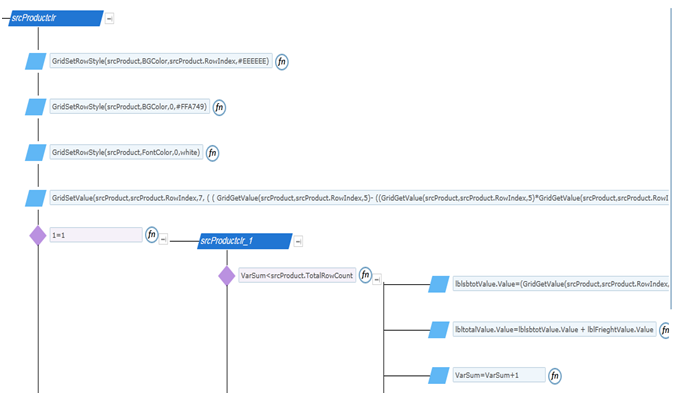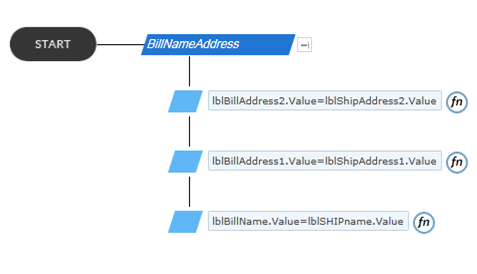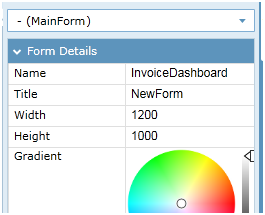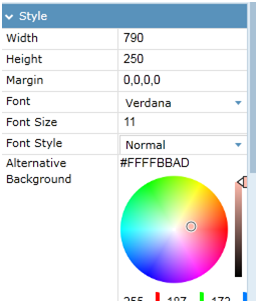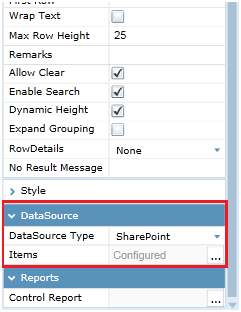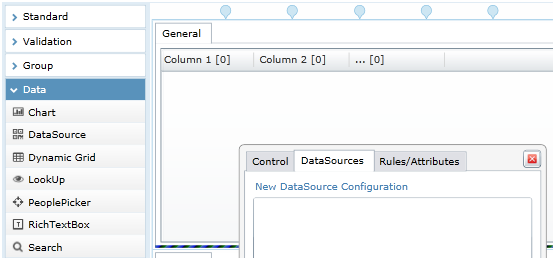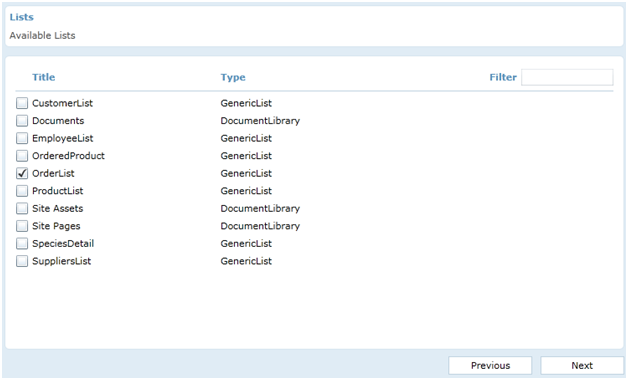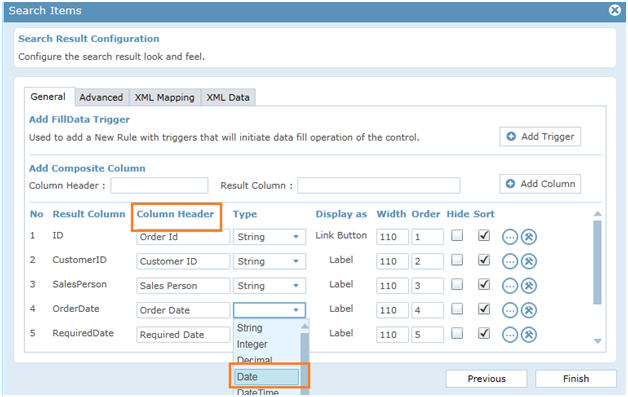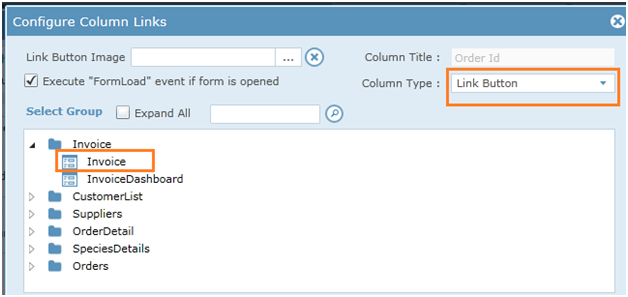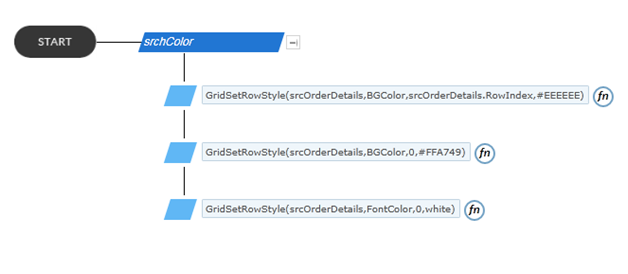An invoice form is used to display a consolidated list of all orders from the Orders List in a grid format. Clicking on an OrderId brings up a detailed Invoice showing the Order details which includes Shipping Address, Billing Address, Product Details and Total Amount for the Order.
- SharePoint 2010
SharePoint list is used as a DataSource for Invoice. SharePoint lists consist of rows and columns that store data in a similar fashion to a traditional relational database management system such as SQL Server. However, a benefit of lists is that SharePoint includes Web Parts that provide simple methods for managing the data. If the data was stored in a database, it would require custom user interface components to access it and manipulate it. Also, specialized skills are required to design, implement, and maintain a custom database. Another advantage of using lists is that custom workflow and event handlers can easily be registered to them. By default the following columns are available in sharePoint list:
- ID
- Title
- Modified
- Created
- Modified By
- Created By
- Attachments
Apart from these default list columns, user can add more columns depends on requirement.
| SharePoint List | |||
|---|---|---|---|
| List Name | Column Name | Data Type | |
| ProductList
Details of all the products are stored in this list. |
ProductName | Single line of text | |
| UnitPrice | Single line of text | ||
| ProductId | Single line of text | ||
| Category | Single line of text | ||
| SupplierID | Number | ||
| IsDiscontinued | Single line of text | ||
| SharePoint List | |||
|---|---|---|---|
| List Name | Column Name | Data Type | |
| Ordered Product
Details of ordered products are stored within this list. |
OrderID | Single line of text | |
| ProductID | Single line of text | ||
| Quantity | Single line of text | ||
| Discount | Single line of text | ||
| UnitPrice | Single line of text | ||
| SupplierID | Number | ||
| SharePoint List | |||
|---|---|---|---|
| List Name | Column Name | Data Type | |
| Order List
Details of all orders are stored in this list. |
CustomerID | Single line of text | |
| SalesPerson | Single line of text | ||
| OrderDate | Date and Time | ||
| equiredDate | Date and Time | ||
| ShippedDate | Single line of text | ||
| ShipVia | Single line of text | ||
| SharePoint List | |||
|---|---|---|---|
| List Name | Column Name | Data Type | |
| List Name Functionality CustomerList
Details of the customer are stored in this list. |
CustomID | Single line of text | |
| Name | Single line of text | ||
| FirstAddress | Single line of text | ||
| SecondAdress | Single line of text | ||
| Phone | Single line of text | ||
| List Of Forms Used | ||
|---|---|---|
| Name | Functionality | |
| Invoice Form Design Rule Design | Shows the detailed Invoice including shipping and billing address. This form contains two search controls-srcOrder and srcProduct. The first grid shows the Order details as shown in the InvoiceDashboard. The second one shows the product details pertaining to that order. | |
| InvoiceDashboard Form Design Rule Design | Contains a search control which is used to display the details of all the orders. | |
Click Next until you reach the Search Result Configuration screen, the columns you had chosen would be shown there, you can modify the Column Header to give a user friendly name to the column. For Date columns change the default Type chosen as DateTime to Date if only date is to be displayed.
The order id from the InvoiceDashboard form is passed to the hidden textbox named “hdntxtOrderId” in Invoice form. This rule contains all actions that has to take place once the order id value is filled in the hidden text box (hdntxtOrderId). ExecuteCommand(Select) rule is called in order to select the customer id corresponding to the given order id from the Customer List in textbox named“hdntxtcustomerId”. Next two searches SrcProduct and SrcOrder are filled using the order id.
Contains 3 GridSetRowStyle rule. First one is used to set background color for all rows in the srcOrder search. Second one is used to set the header background color of the srcOrder search. Third one is used to set the header font color of the srcOrder search.
Contains 3 GridSetRowStyle rule. First one is used to set background color for all rows in the srcProduct search. Second one is used to set the header background color of the srcProduct search. Third one is used to set the header font color of the srcProduct search. GridSetValue rule is used to calculate and set the value in the “Extended price” column in Srcproduct search. Next a sub rule named “srcProductclr_1 “will be executed. This rule will work as a loop. This rule initially checks if the value of variable VarSum is less than the total row count of srcProduct search. If the condition is satisfied “Extended Price” value of each row is added and displayed in the SubTotal label displayed at the bottom. Also the subtotal value is added to the freight value and displayed in the total label at the bottom.
Click Next until you reach the Search Result Configuration screen. The columns you had chosen would be shown there,you can modify the Column Header to give a user friendly name to the column. For Date columns change the default type chosen as DateTime to Date if only date is to be displayed.
Choosing Link Button opens another section below, where you can choose the form to navigate to when the button is clicked. Enter the folder name where the form is present and search to get that folder alone. Choose the form to be opened, in this case the Invoice form. Choosing this form makes this available in the Form Name drop down below.
Contains 3 GridSetRowStyle rule. First one is used to set background color for all rows in the search control. Second one is used to set the header background color of the search control. Third one is used to set the header font color of the search control.
